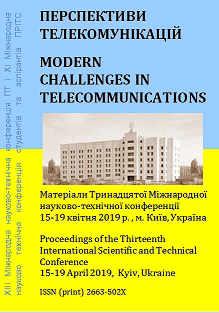АНАЛІЗ ІНСТРУМЕНТАЛЬНИХ ЗАСОБІВ СТВОРЕННЯ КОРПОРАТИВНИХ ІНФОРМАЦІЙНИХ СИСТЕМ (КІС)
Ключові слова:
Корпоративна інформаційна система, ERP, CRM, MES, WMS, EAM, HRMАнотація
Analysis of instrumental tools for creating corporate information systems (CIS)
In order to ensure the work, logging and statistical processing of these corporations, large-scale systems "Corporative Information System" (KIS) have been developed. The main purpose of which is to efficiently use all resources and increase the efficiency of management decisions for high profits. The report analyzes existing KIS and tools for their creation.
Посилання
Береза А. М. Основи створення інформаційних систем: Навчальний посібник. — К.: КНЕУ, 1998. — 140 с.
Корпоративные информационные системы : учеб. пособие / В.А. Погонин, А.Г. Схиртладзе, С.И. Татаренко, С.Б. Путин. – Тамбов : Изд-во ФГБОУ ВПО «ТГТУ», 2012. – 144 с. – 400 экз. – ISBN 978-5-8265-1114-5.
Пономаренко В. С. Інструментальні засоби розробки та підтримки баз даних розподілених інформаційних систем : навч. пociбн. / В. С. Пономаренко, Л. А. Павленко. – X. : Вид. ХДЕУ, 2001. – 132 с.
##submission.downloads##
Як цитувати
Номер
Розділ
Ліцензія
Авторське право (c) 2019 Тетяна Олексіївна Прищепа, Олександр Олегович Берестовенко

Ця робота ліцензується відповідно до Creative Commons Attribution 4.0 International License.
Authors who submit to this conference agree to the following terms:a) Authors retain copyright over their work, while allowing the conference to place this unpublished work under a Creative Commons Attribution License, which allows others to freely access, use, and share the work, with an acknowledgement of the work's authorship and its initial presentation at this conference.
b) Authors are able to waive the terms of the CC license and enter into separate, additional contractual arrangements for the non-exclusive distribution and subsequent publication of this work (e.g., publish a revised version in a journal, post it to an institutional repository or publish it in a book), with an acknowledgement of its initial presentation at this conference.
c) In addition, authors are encouraged to post and share their work online (e.g., in institutional repositories or on their website) at any point before and after the conference.

